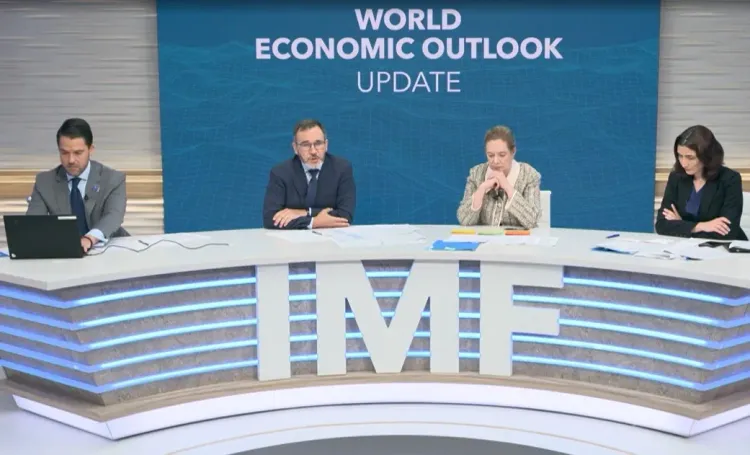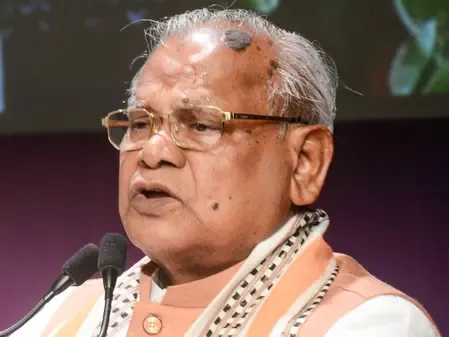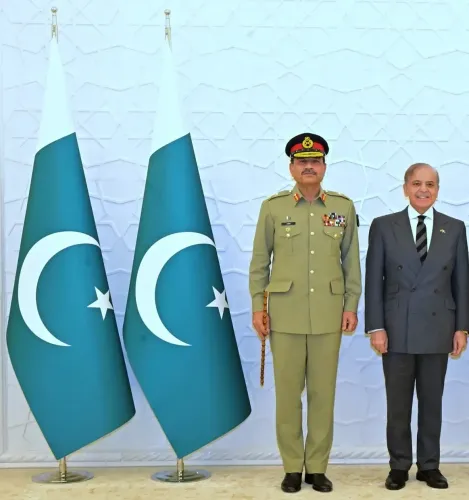Why is the IMF Optimistic About India's Growth?

Synopsis
Key Takeaways
- IMF projects India's growth at 6.4%.
- Reform momentum is a key factor.
- Suspension of US tariffs positively impacts growth.
- Need for ongoing investment in education and infrastructure.
- Global economic conditions also influence growth forecasts.
United Nations, July 29 (NationPress) The International Monetary Fund (IMF) has upgraded India's growth forecasts for this and the upcoming fiscal years to 6.4 percent, highlighting the nation's “reform momentum” as a significant contributor. This positions India as the fastest-growing major economy globally.
Deniz Igan, a chief in the Research Department, noted that one of the key factors behind India’s growth is the “reform momentum”, which is fostering strong consumer spending and boosting public investments.
The World Economic Outlook (WEO) Update, reflecting a “more favorable external environment” than previously assumed in April, has increased India's growth projections by 0.2 percent for the current fiscal year and 0.1 percent for the next.
It was also mentioned that if evaluated on a calendar year basis, India's growth predictions would stand at 6.7 percent for the current year and 6.4 percent for the following year. (India’s fiscal year begins in April while the IMF typically uses the calendar year for other nations.)
Aside from the reform momentum, the revised growth expectations are attributed to the halt of increased tariff rates that were threatened by the US, alongside amended inflation forecasts of 3.7 percent this year and 4 percent next year, due to declining food prices, Igan mentioned during a press briefing in Washington.
Despite potential disruptions from tariff conflicts, the WEO has raised the global growth outlook for this calendar year by 0.3 percent to 3.2 percent and by 0.1 percent for the next year, also to 3.2 percent.
The report attributes these increases to “stronger-than-expected stockpiling of imports in the US”, lower average effective US tariff rates than initially anticipated, enhanced financial conditions attributed to a weaker US dollar, and fiscal expansion in several key jurisdictions.
For China, the second fastest-growing major economy, the WEO has raised the growth forecast for this calendar year by 0.8 percent to 4.8 percent, with a projected decline to 4.2 percent next year.
The growth outlook for the US has improved by 0.1 percent to 1.9 percent this year, and by 0.3 percent to 2 percent for next year.
Overall, for advanced economies, the WEO has raised the forecast by 0.1 percent to 1.5 percent this year and 1.6 percent next year.
The report cautioned that a “rebound in effective tariff rates could weaken global growth”.
“Heightened uncertainty may increasingly impact economic activity, especially as deadlines for further tariffs approach without meaningful agreements,” it added.
Igan emphasized that for India to maintain its growth path, “priorities must include job creation and integrating excess labor from agriculture by reskilling and enhancing labor market flexibility.”
Moreover, India needs to persist in investing in infrastructure and “eliminating trade barriers,” she advised.
“In the medium term,” she continued, “India must continue investing in education, pursue land reform, expand the social safety net, and reduce bureaucratic hurdles to enhance business performance.”










